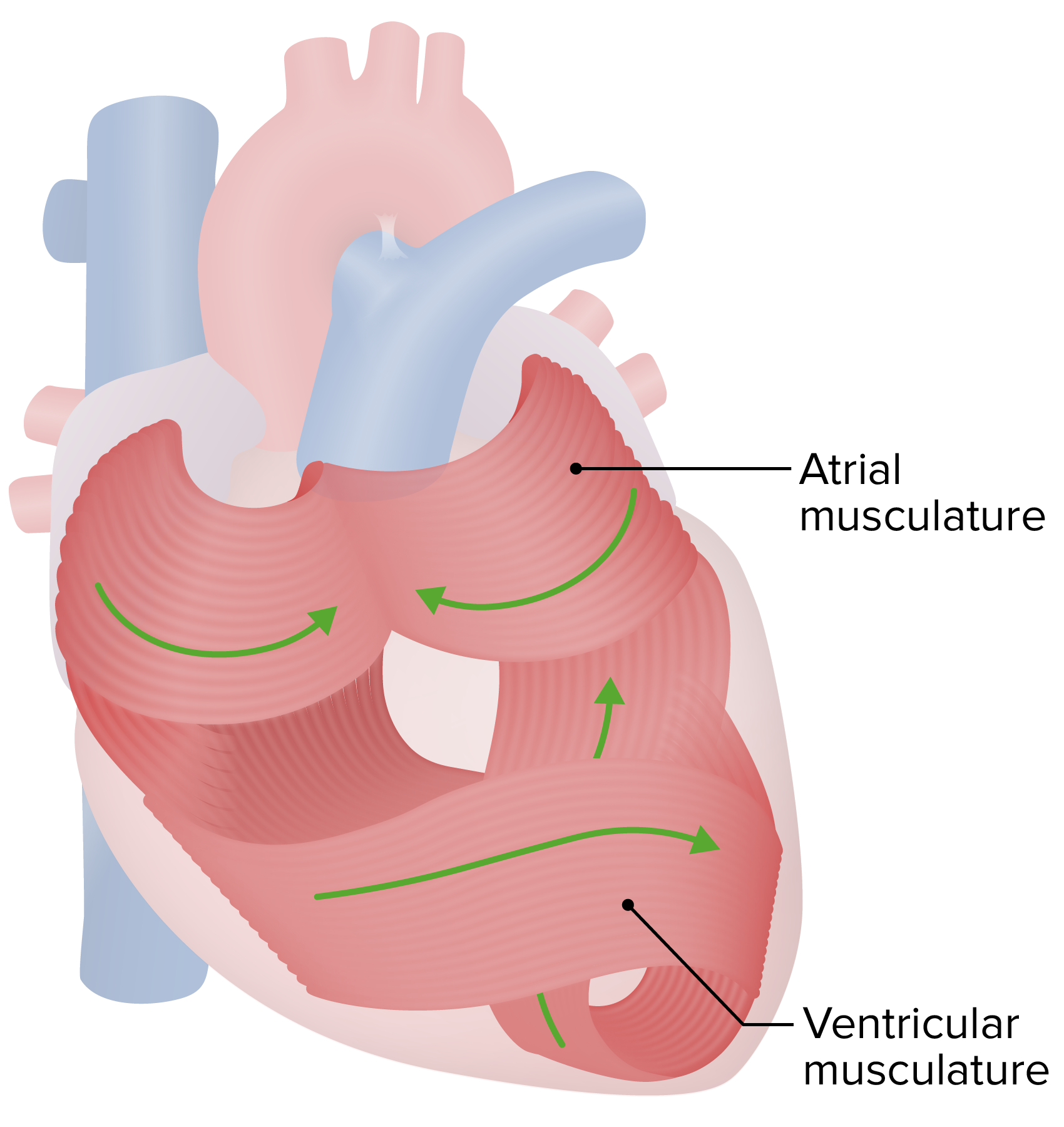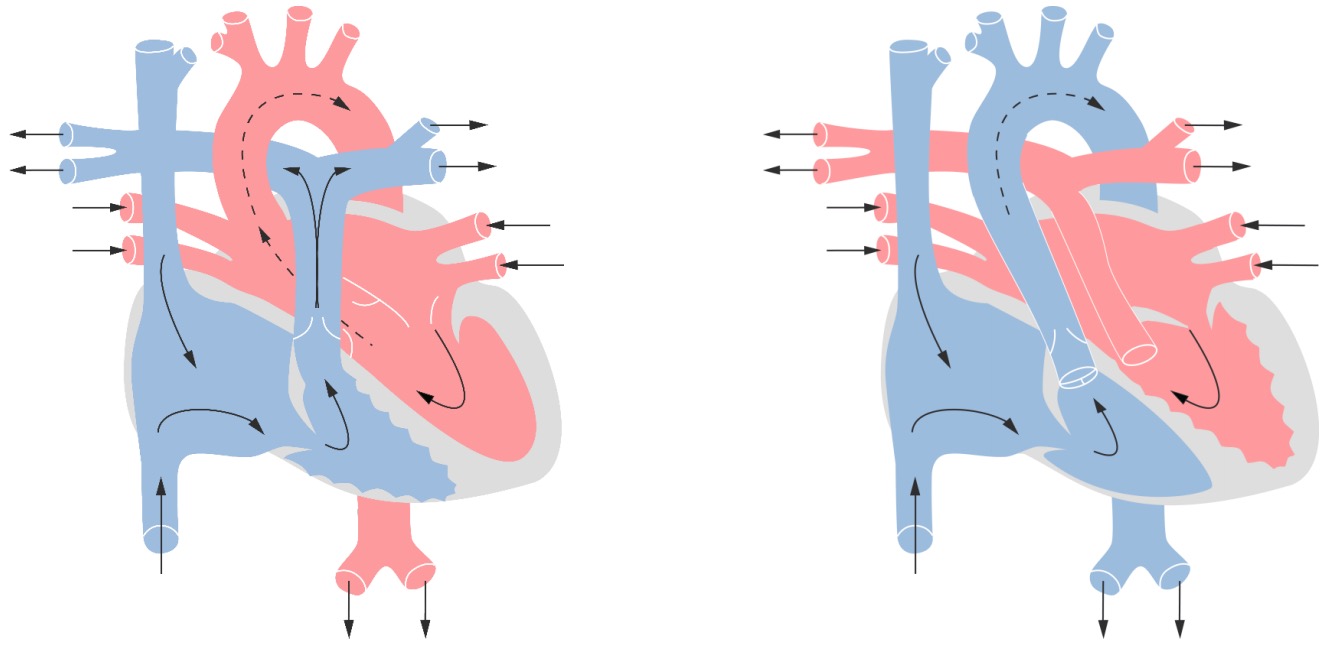Playlist
Show Playlist
Hide Playlist
Tetralogy of Fallot (TOF)
-
Slides Cyanotic Heart Disease.pdf
-
Reference List Pediatric Nursing.pdf
-
Download Lecture Overview
00:01 Let's move on to tetralogy of Fallot. 00:06 Tetralogy of Fallot is the most common cyanotic heart disease and it frequently shows up on multiple choice tests. 00:14 So I think it's important to go through tetralogy and really understand what it is. 00:19 It's important to memorize the four findings in the tetralogy and I'm going to go through them now for you. 00:25 There are four major findings and it can look pretty complicated. 00:31 But if I go through it one step at a time, I think you'll understand it. 00:36 Here we go. 00:39 On the left side, you can see a normal heart. 00:43 On the right side of your slide, you can see tetralogy of Fallot. 00:48 I'm going to walk through the tetralogy, the four findings in tetralogy, and I'm going to make it so you're convinced that it's not as complicated as it sounds. 00:56 Let's start with an overriding aorta. 00:59 In these patients, there is that connection between the two ventricles called the VSD. 01:07 The aorta rides over that VSD and allows the mixed blood to go into the aorta. 01:15 That's why these infants are cyanotic. 01:17 Some of that right-sided blood is shunting to the left through that VSD and up into that overriding aorta. 01:24 Two of the findings in tetralogy are overriding aorta and VSD. 01:29 When you hear "tetralogy," it's not really true. 01:33 Maybe you could call it triology of Fallot because you couldn't really have an overriding aorta without a VSD. 01:40 if you imagine how could the aorta ride over both ventricles unless there's a hole between them? Additionally, these patients have some pulmonary stenosis. 01:51 Basically, as that area shifts over and you're allowing for that overriding aorta, there's a squeezing of the pulmonary artery allowing for stenosis. 02:04 That narrowed pulmonary stenosis results in a right ventricular hypertrophy. 02:11 Really, it's the biology of Fallot in that you're both having the VSD and the overriding aorta, and the pulmonary stenosis resulting at right ventricular hypertrophy. 02:26 However, realistically, this is just one thing. 02:31 You could call it "The Fallot" if you want. 02:33 The abnormal rotation of the conotruncal septum at the top part of the heart is it's abnormally rotated as opposed to the intraventricular septum - the bottom part of the heart - and this whole shifting results in all of these findings. 02:52 It's really just a shifting of the upper part against the lower part of the heart that results in the full tetralogy. 02:59 That might make it a little bit more clearer. 03:03 It's important to understand that children who have a high-degree of pulmonary stenosis are going to be sicker than children who have less pulmonary stenosis. 03:13 The key thing about how blue a baby is at birth is how much pulmonary stenosis there is. 03:20 In a baby with a lot of pulmonary stenosis, more of that blood is going to get shunted over to the left side. 03:26 In a baby with less pulmonary stenosis, it's going to go right up into the lungs, and that's going to be the distinguishing feature between a baby who's what we call a "pink tet" - someone with less stenosis and less cyanosis - versus a "blue tet" - a baby who has a lot of pulmonary stenosis and a lot of blood shunting. 03:47 Additional points that are high-yield are the boot-shaped appearance of the heart on CXR. 03:52 And the role of squatting in increasing peripheral vascular resistance and thus decreasing the magnitude of the right-to-left shunt.
About the Lecture
The lecture Tetralogy of Fallot (TOF) by Brian Alverson, MD is from the course Pediatric Cardiology.
Included Quiz Questions
What finding in tetralogy of Fallot most directly affects whether a child is a “pink tet” or a “blue tet”?
- Pulmonary artery stenosis
- Ventricular septal defect
- Overriding aorta
- Right ventricular hypertrophy
- Left ventricular hypertrophy
Which of the following is NOT a feature of tetralogy of Fallot (TOF)?
- Left ventricular hypertrophy
- Overriding aorta
- Right to left shunt
- Ventricular septal defect
- Pulmonary stenosis
How does the heart silhouette typically appear on a posterior-anterior X-ray in a patient with tetralogy of Fallot (TOF)?
- Boot shaped
- Normal
- Bottle shaped
- Smaller than normal
- Conical
Customer reviews
4,0 of 5 stars
| 5 Stars |
|
5 |
| 4 Stars |
|
0 |
| 3 Stars |
|
0 |
| 2 Stars |
|
1 |
| 1 Star |
|
1 |
I liked the explanation for the Tetraology of Fallot and that important points were added or emphasized.
I really love it.. I just wish it have the indications and timing of the repair.
Excellent lecture as usual. It makes a complicated topic much easier. Thanks!
thanks to this video i now have a much clearer understanding of TOF much thank you dr alverson
3 customer reviews without text
3 user review without text





